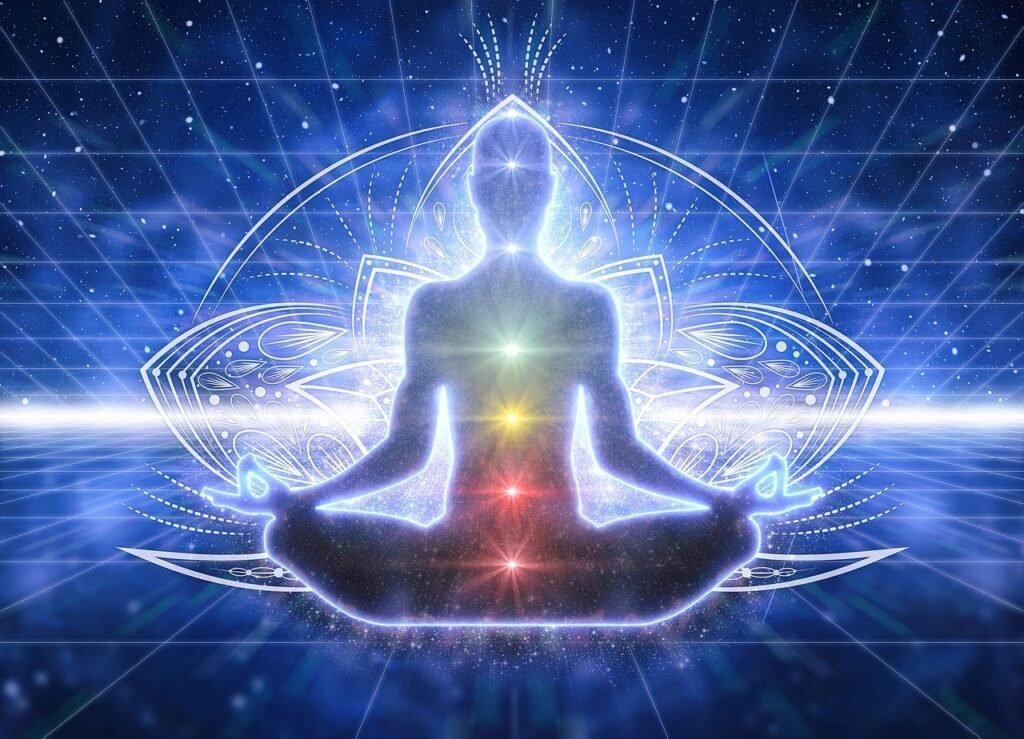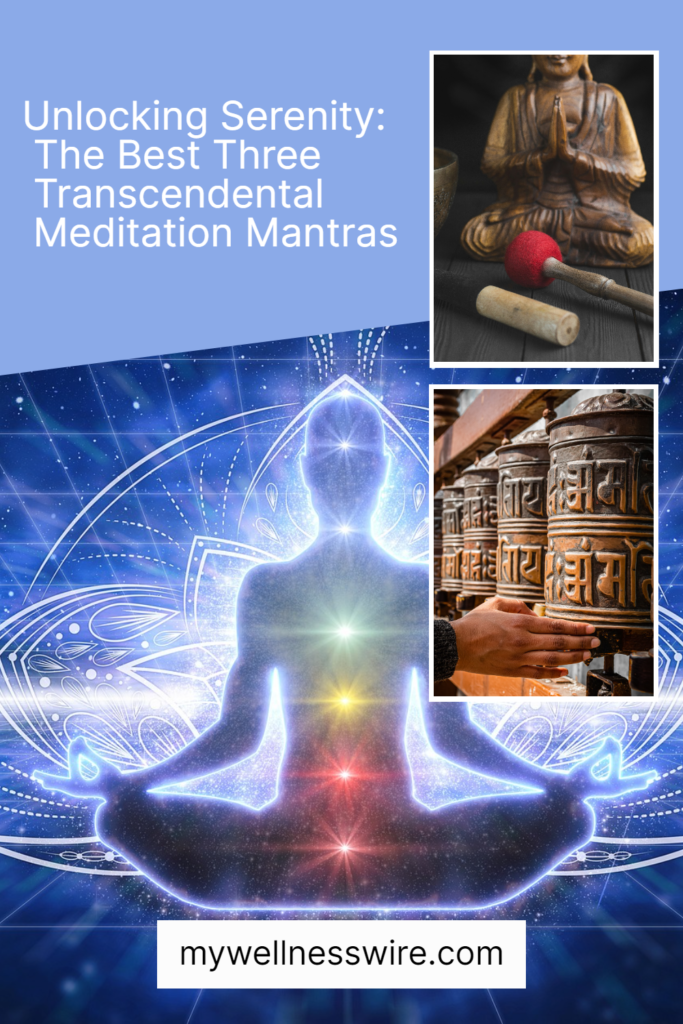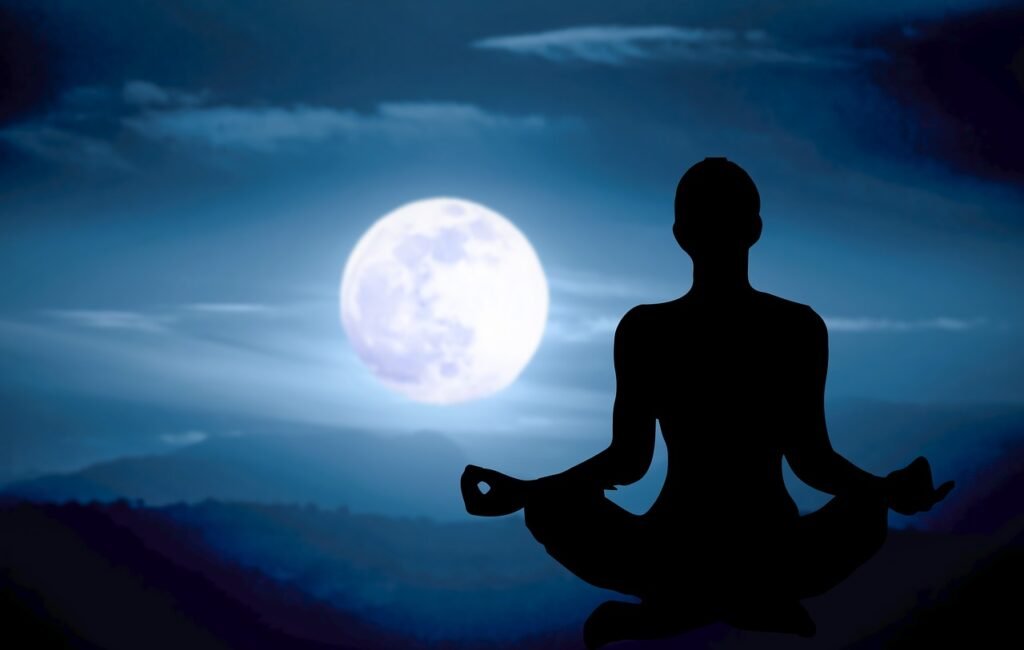
Intro
In a world teeming with stressors and distractions, finding a moment of peace can seem like an insurmountable challenge. However, the ancient practice of transcendental meditation offers a pathway to serenity that has been trodden for centuries.
At the heart of this practice are transcendental meditation mantras, simple yet profoundly powerful phrases or sounds that, when repeated silently, can unlock deep states of relaxation and awareness.
Building on on our guide to perfecting meditation poses; This post explores three of the best mantras that have been cherished and used by practitioners around the globe, each carrying its unique vibrational quality and potential for transformation.
The Significance of Mantras in Transcendental Meditation
In exploring the depths of transcendental meditation, one cannot overlook the pivotal role played by mantras. These are not mere words or phrases but are considered sonic keys that unlock deeper realms of consciousness.
The Transcendental Meditation movement was founded by Maharishi Mahesh Yogi in India in the 1950s.
A mantra acts as a focal point, an anchor that steadies the mind amidst the ocean of thoughts that can often overwhelm us. This unique aspect of transcendental meditation is what sets it apart from other forms of meditation, where focus might be placed on breath or bodily sensations.
Here, the mantra becomes the gateway to transcendence, offering a direct path to inner stillness.
The beauty and efficacy of these transcendental meditation mantras lie in their vibratory quality. Each mantra is imbued with a specific vibrational frequency that, when silently repeated, harmonizes the mental and physiological processes.
This synchronization facilitates a seamless transition from the active, surface level of the mind to the serene, undisturbed depths of consciousness. It is akin to dropping a pebble into a still pond—the mantra sends ripples across the surface of the mind, gently guiding it towards its own silent depths.
Moreover, the selection of a mantra in transcendental meditation is a nuanced process. While certain mantras, like “Om” or “So-Hum,” are universally recognized and widely employed, practitioners often receive a personalized mantra.
This personalized mantra is tailored to resonate uniquely with the individual’s consciousness, further enhancing the depth and effectiveness of the meditative experience.
The vibrational quality of these mantras interacts with the individual’s unique mental and emotional makeup, facilitating a deeply personal and transformative journey within.
In the fabric of transcendental meditation, mantras are thus the threads that weave the tapestry of deep, introspective states.
They serve as the silent companions that guide the practitioner through the layers of consciousness, revealing the innate peace and wholeness that lies beneath the tumult of daily life.
As tools of transformation, these mantras do not derive their power from their semantic meaning but from their ability to transcend the cognitive, leading the meditator into the experiential realm of pure awareness.
Through this journey, the mantra becomes more than a sound—it becomes a beacon of light illuminating the path to inner tranquility and expanded consciousness.
“Om” – The Universal Sound
The mantra “Om” holds a special place in the realm of transcendental meditation as well as in various spiritual traditions worldwide.
It is revered as the foundational vibration, the echo of the cosmos from which all of life purportedly sprang. When practitioners vocalize or mentally focus on this mantra, they engage with a frequency believed to be the undercurrent of all existence.
This act of chanting or silent repetition serves as a powerful tool to align oneself with the vast energies of the universe.
By invoking “Om,” individuals embark on a meditative journey that transcends mere relaxation. The sound vibrates through the practitioner, creating a resonance that extends beyond the physical body, touching the core of one’s being.
This vibrational harmony fosters a profound experience of interconnectedness, bridging the gap between the self and the infinite expanse of the universe. It is this sense of universal connection that can elicit a transformative peace and a heightened state of consciousness.
Engaging with “Om” as a transcendental meditation mantra facilitates a deeper understanding and appreciation of the intricate tapestry of life. It encourages a dissolution of the boundaries that separate the individual from the cosmic whole.
Through regular practice, meditators find that the resonance of “Om” permeates their being, guiding them towards insights into the nature of existence and their role within it. This mantra acts not only as a key to personal tranquility but also as a conduit for experiencing a profound sense of unity with all that is.
Furthermore, the simplicity and profundity of “Om” make it accessible to both novices and seasoned practitioners of transcendental meditation. It stands as a testament to the power of sound vibrations in facilitating mental, emotional, and spiritual wellbeing.
By integrating “Om” into their meditation practice, individuals can explore the depths of their consciousness and tap into the universal energies that bind the fabric of existence together.
This journey with “Om” is a testament to the mantra’s enduring relevance and its capability to open doors to expansive states of awareness and bliss.
“So-Hum” – I Am That
The mantra “So-Hum” weaves a narrative of profound interconnectedness and self-realization.
It is an ancient Sanskrit phrase that, when broken down, reveals a deep and abiding truth. “So” means “I am,” and “Hum” signifies “that,” referencing the essence of the universe itself.
Together, they form a declaration of unity with the cosmos, an acknowledgment of the individual’s place within the vast tapestry of existence.
This simple yet powerful mantra is a tool for remembering our intrinsic link to everything that is.
In the practice of transcendental meditation, “So-Hum” serves as a gentle, yet potent, reminder of our fundamental nature. As one silently repeats this mantra, it becomes more than just a sequence of sounds.
It evolves into a meditative process that sheds light on the illusion of separation, revealing the inherent oneness of life. The repetition of “So-Hum” allows for a gradual dissolution of the ego, offering insights into the unity of the self with the universal consciousness. This realization fosters a sense of belonging and interconnectedness that transcends the physical boundaries of existence.
The practice with “So-Hum” encourages a meditative exploration where the practitioner comes to view themselves not as isolated beings, but as integral parts of a larger, dynamic whole.
It shifts the perspective from one of individuality to one of collective unity, nurturing a deep empathy and understanding for the interconnected nature of life. Through this mantra, one embarks on a journey of self-discovery, unearthing the layers of personal identity to uncover the core essence that is interconnected with the fabric of the universe.
As practitioners delve deeper into their meditation with “So-Hum,” they might experience a profound transformation. This mantra becomes a vehicle for transcending the mundane aspects of self, guiding the meditator toward a state of awareness where the distinction between the individual and the cosmos blurs.
In this space, the mantra acts as a beacon, illuminating the path to recognizing the self in all of creation and all of creation within the self. The continuous reflection on “So-Hum” cultivates an inner environment ripe for the blossoming of this expansive awareness, gradually leading to a lived experience of the unity and harmony that it signifies.
“Sat-Chit-Ananda” – Existence, Consciousness, Bliss
“Sat-Chit-Ananda” is more than just a mantra; it’s a profound affirmation of our true nature and the qualities that define our deepest self.
This Sanskrit phrase encapsulates the journey of transcendental meditation towards realizing a state of pure being, ultimate awareness, and everlasting bliss. Each component of the mantra – “Sat” meaning existence or truth, “Chit” denoting consciousness or awareness, and “Ananda” representing bliss or pure joy – guides the practitioner into an exploration of their inner universe, revealing the interconnectedness of these universal attributes within.
Delving into “Sat-Chit-Ananda” through meditation invites a deep connection with the essence of who we are beyond our physical form and mental constructs.
It is a call to awaken to the eternal presence that exists within, a presence that is unchanging and radiant with bliss. This mantra encourages a shift in perspective, from identifying with the transient aspects of life to recognizing and embodying the enduring truth of our existence.
The practice of focusing on “Sat-Chit-Ananda” can illuminate the path to self-realization. It allows for a transcendence of the limitations imposed by the ego and the sensory world, leading to an experiential understanding of the self as part of the vast tapestry of life.
Engaging with this mantra, one cultivates an inner landscape where peace and joy are not contingent on external circumstances but are found within, as inherent aspects of our being.
As the meditator repeats “Sat-Chit-Ananda,” they may find themselves dissolving into the spaciousness of pure consciousness, where the sense of separation fades, and oneness with all that is becomes the prevailing experience. This state of blissful awareness is not a fleeting emotion but a steady realization of our fundamental nature – a state of being that is imbued with the tranquility, clarity, and joy that the mantra signifies.
Incorporating “Sat-Chit-Ananda” into one’s meditation practice is an invitation to embark on a transformative journey. It is an exploration of the depths of the self, a return to the essence of our existence, where each individual can discover the boundless joy and peace that lie at the heart of transcendental consciousness.
Through this mantra, we are reminded of our capacity to experience life fully, with an open heart and an awakened spirit, embodying the timeless truth of our own divine nature.
Pin this post to read later



